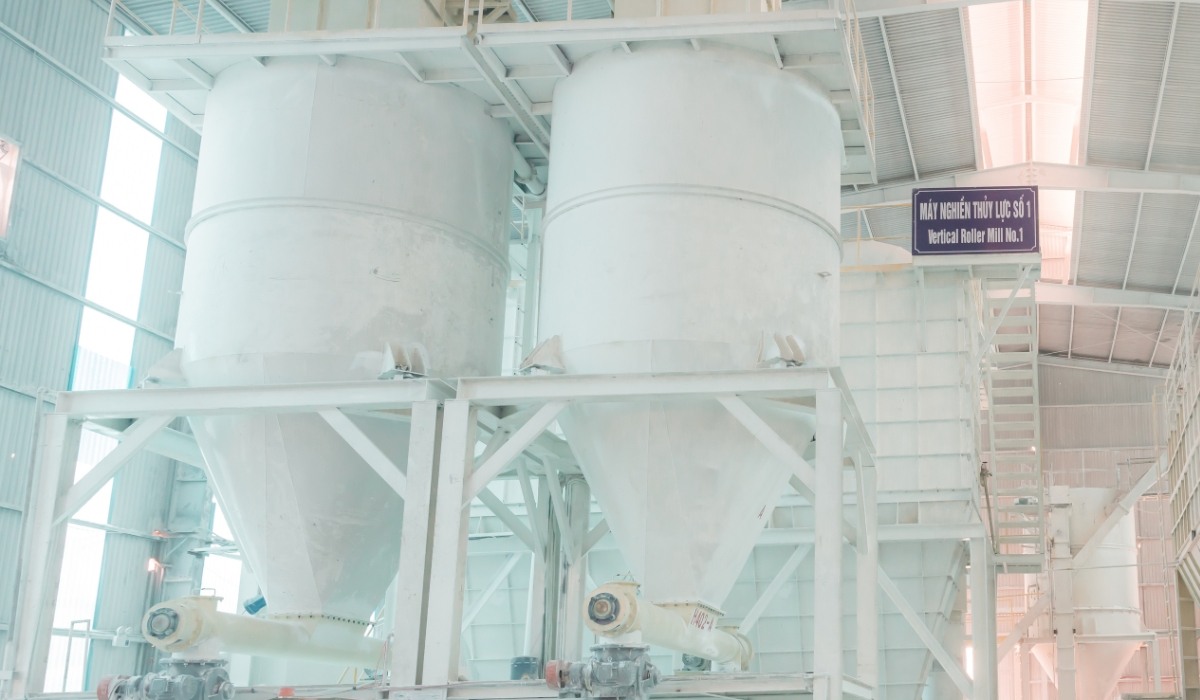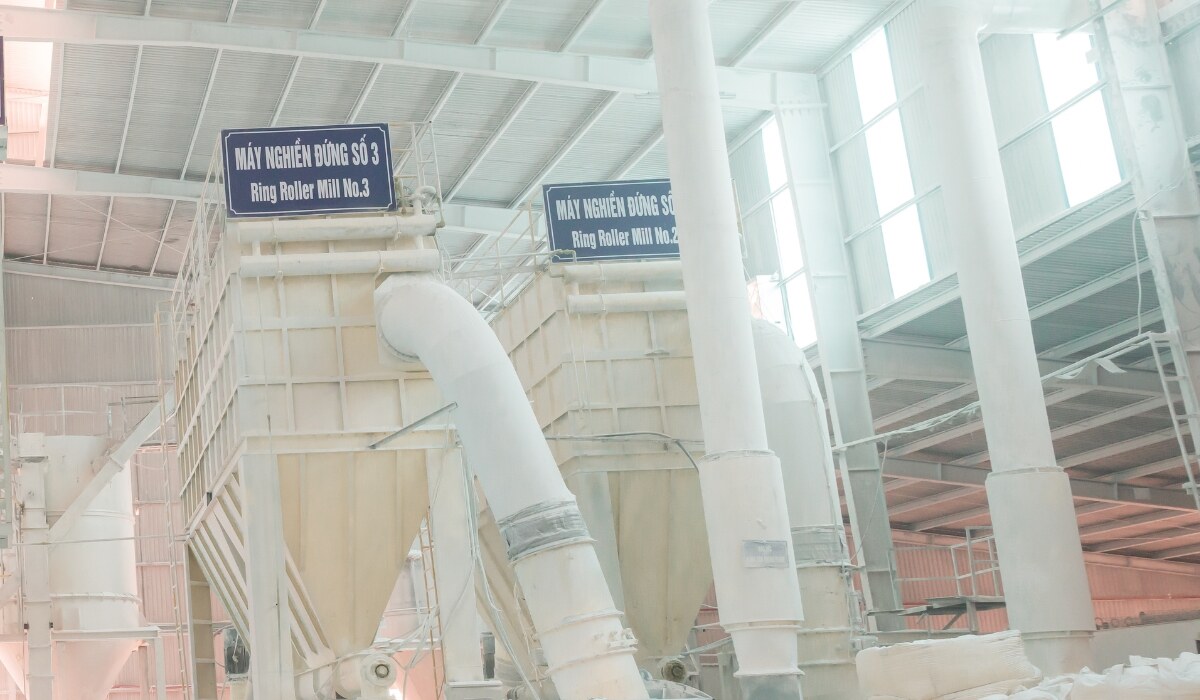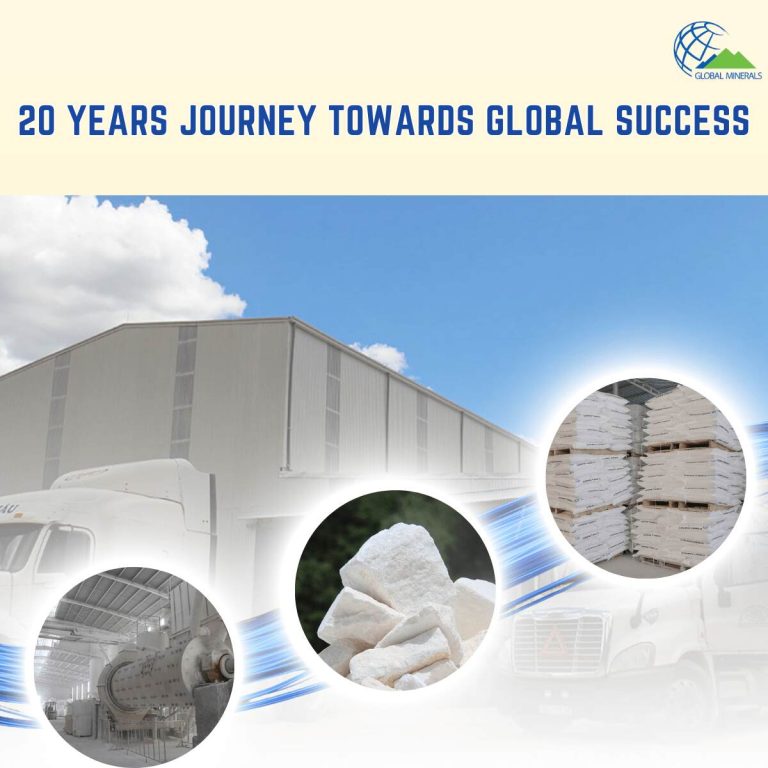Table of Contents
In the calcium carbonate powder (CaCO3) manufacturing industry, choosing the right grinding method plays a crucial role in optimizing performance and ensuring product quality. Two popular methods currently are Hydraulic Milling and Roller Milling. Global Minerals, with over 21 years of experience in mining and processing minerals, provides advanced solutions to meet global production needs.
This article helps you understand the differences between these two grinding methods and their impact on calcium carbonate powder quality.
The Journey to Find Optimal Grinding Technology
Manufacturers continuously strive to improve the quality of input materials to ensure their final products meet the highest standards. One of the essential factors in this process is the grinding method, which directly affects particle size, purity, and utilization efficiency of calcium carbonate powder. Understanding the differences between hydraulic milling and roller milling will help businesses make the best decisions.
Target Customers of Global Minerals
Manufacturers seeking the most effective grinding methods: The differences between hydraulic milling and roller milling may impact particle size control, product purity, and operating costs.
Businesses aiming to reduce waste in production processes: An optimal grinding method helps maximize raw material utilization rates, minimize wastage, and increase productivity.
Factories needing to ensure input quality: Choosing the appropriate grinding technology helps maintain calcium carbonate powder uniformity, ensuring efficiency in applications such as PVC profiles and PVC fittings.
Explore our factory: Global Minerals’ Factory
Global Minerals and the Grinding Technology Revolution
Grinding technology is continually being improved to enhance production efficiency and optimize product quality. Global Minerals is committed to delivering modern grinding solutions with strict quality control systems (Strict quality control), ensuring customers receive high-quality calcium carbonate powder with superior purity.

Comparison of Grinding Technologies: Hydraulic Milling vs Roller Milling
- Product Purity
Hydraulic Milling: Retains the crystal structure of CaCO3, minimizes impurities due to the wet grinding process.
Roller Milling: May increase contamination levels due to friction and heat generated during dry grinding.
- Particle Size Control
Hydraulic Milling: Easily adjustable and controllable particle sizes, producing products with a wide range of sizes (Wide range of Particle Size) to meet diverse demands.
Roller Milling: Difficult to control small and uniform particle sizes, which may reduce efficiency in certain industrial applications.
- Economic Impact
Hydraulic Milling: Higher initial operating costs but provides long-term benefits by reducing raw material wastage and improving product quality.
Roller Milling: Lower investment costs but may increase wastage rates and reduce calcium carbonate powder uniformity.
- Environmental Impact
Hydraulic Milling: Minimizes dust generation, contributing to environmental protection and improving working conditions in factories.
Roller Milling: Generates more dust during the dry grinding process, potentially affecting the environment and workers’ health.

Choosing between hydraulic milling and roller milling depends on specific business needs. If high purity, flexible particle size control, and reduced environmental impact are required, hydraulic milling is the optimal solution. Conversely, if the goal is to minimize initial investment costs while accepting some limitations in particle size control, roller milling may be a suitable choice.
Global Minerals is committed to providing high-quality calcium carbonate powder with advanced grinding technology, meeting strict standards (Strict quality control) to deliver maximum value to customers. Contact us now for consultation and the best pricing!



